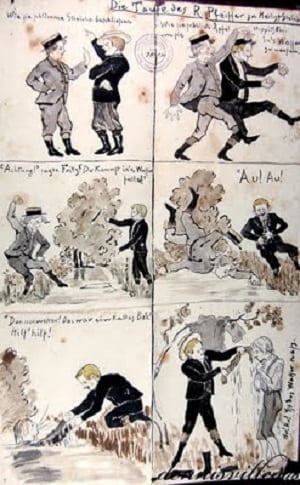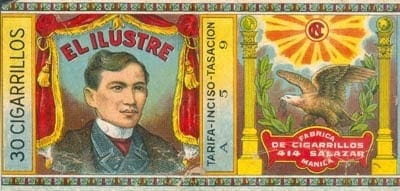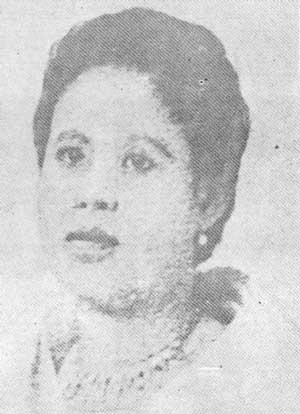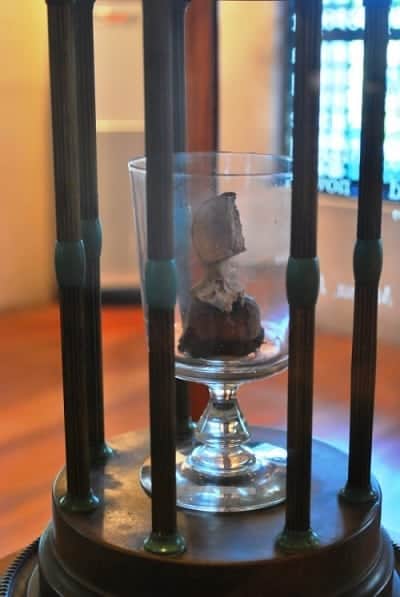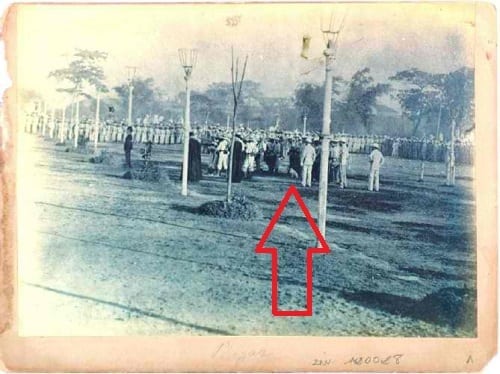36 Amazing Facts You Probably Didn’t Know About Jose Rizal

As one respected Filipino historian once said, “Jose Rizal is everywhere yet he is nowhere.”
We’ve learned more about his life than any other Filipino hero who fought for our liberty. His name is indeed everywhere–from coins and schools to streets and numerous monuments.
Still, few Filipinos bother to look back at his life, and the principles that made him our unofficial national hero.
So how do we inspire our countrymen, especially the millennials, to know more about this oft taken-for-granted hero? It should all start with curiosity, and nothing can intrigue them better than bite-sized trivia about Jose Rizal’s life, works, and death.
After all, there’s more to know about him aside from the basic stuff your history teacher taught you.
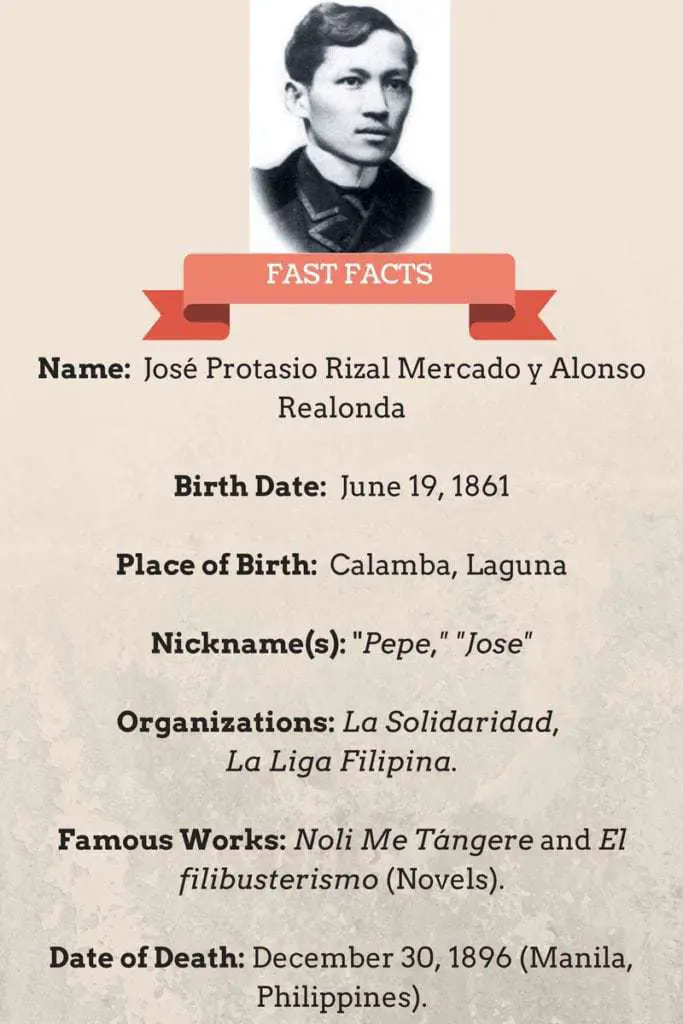
1. Jose Rizal was a naughty boy in the famous “Moth and Lamp” story
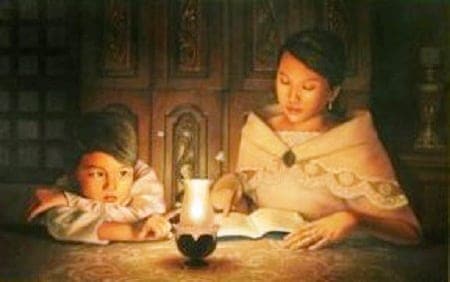
Perhaps no other story sums up Rizal’s childhood so succinctly as his famous story about the lamp and the moth. And despite what you may think, little Rizal was actually being naughty.
Instead of reading a Spanish children’s book diligently given to him by his mother Teodora, he was instead doodling caricatures on its pages. Even after being scolded, he did not pay much attention to the book, focusing his gaze on some moths that were flying around a coconut oil lamp instead. Continue Reading: 11 Things From Philippine History Everyone Pictures Incorrectly
2. The Young Jose Rizal Experimented With Drugs
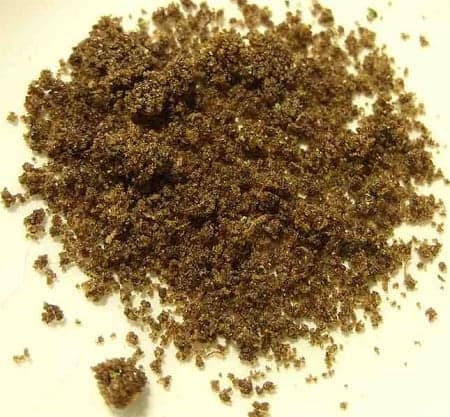
To be fair, Rizal was NEVER a drug addict. However, that did not stop him from trying some for the sake of science. While just an 18-year-old, Rizal once used hashish he bought from a drugstore. At the time, the drug—a hallucinogen more potent than marijuana—could be easily bought over the counter along with cocaine, morphine, and heroin. Continue Reading: 9 Reasons Why Rizal Was Just As Human As The Rest Of Us
3. There Are Three Animals Named After Rizal
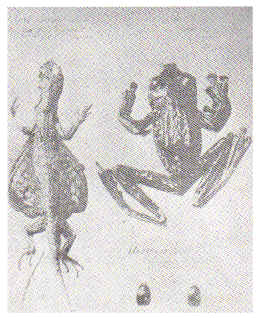
While exiled in Dapitan, he collected three species of animals: Apogonia Rizali (Heller), a type of small beetle; Draco Rizali (Wandolleck), a species of a flying dragon; and Rachophorous Rizali (Boetger), a species of toad.
4. The Rizal Monument in Luneta Was Not Made by a Filipino Artist
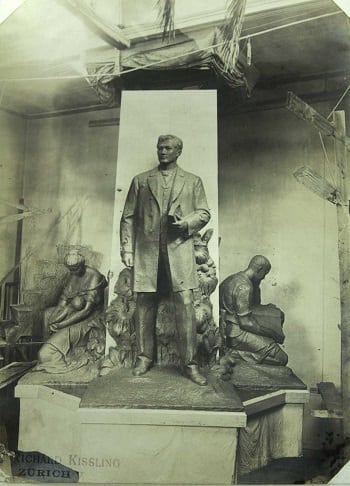
The design was the work of Swiss sculptor Richard Kissling who won second prize in an art competition held in 1907 to find the best scale model for the future Rizal monument.
The first prize went to Italian sculptor Carlo Nicoli of Carrara but the contract to build the monument was given to the second-prize winner. Kissling’s design would use unpolished granite and bronze, which is significantly cheaper than Nicoli’s.
According to Parks for a Nation, “Nicoli was reportedly not able to put up the construction bond required to build the monument. Still, others claimed his design was deemed too expensive as it used Carrara marble.”
5. Rizal Cured Himself of Tuberculosis and Was Later Recognized as a Tuberculosis Expert
6. He Was Already a Terrific Sculptor Even at a Very Young Age
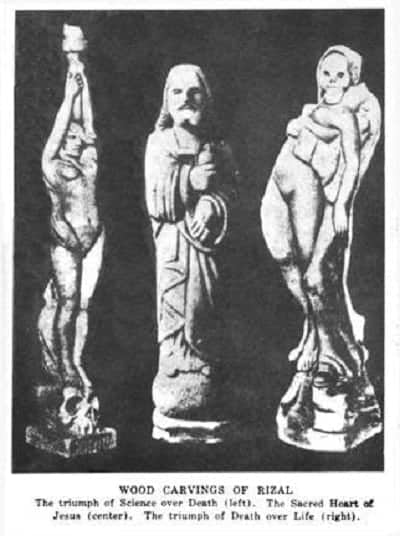
In fact, Rizal carved a 9-inch statuette of the Sacred Heart out of batikuling wood when he was only 14 years old. The Jesuit fathers brought this statuette in Fort Santiago when they visited Rizal in December 1896.
Aside from wood sculptures, Rizal also carved 40 amazing masterpieces out of plaster, terra-cotta, wax, and clay.
7. Jose Rizal’s “El Ermitaño.”
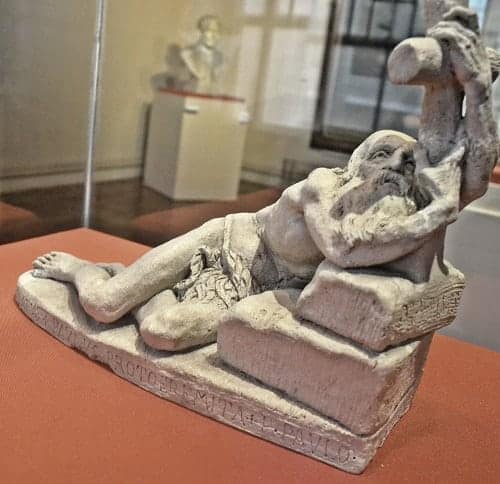
Sculpted by Jose Rizal during his exile in Dapitan, El Ermitaño is an 1893 terra cotta figurine given as a gift to Fr. Pablo Pastells. It shows Rizal’s own interpretation of St. Paul the Hermit or Paul of Thebes, known in Catholic history as the first Christian hermit.
El Ermitaño contains inscriptions in reference to the long and controversial correspondence between Rizal and his Jesuit mentor, Fr. Pastells. The exchange of letters, which took place between September 1892 and June 1893, reveals the Jesuit priest’s attempt to win Rizal back to the Catholic church. Continue Reading: 2 Astonishing Philippine Artifacts You Didn’t Know You Could Find At The National Museum
8. When He Was Studying in Spain, Rizal Had To Pawn a Ring Owned by His Sister Saturnina Just To Pay for His Exams
But he didn’t want his loved ones to get worried, so he only mentioned his victories and excellent grades in the letters addressed to his family.
9. “Mi Retiro”, the Name of His Place in Dapitan, Was Inspired by His Favorite Park in Spain, the Parque Del Buen Retiro
Also Read: The Lottery Winner Who Changed Philippine History (Nope, It’s Not Rizal)
10. Jose Rizal’s anti-Chinese Sentiment
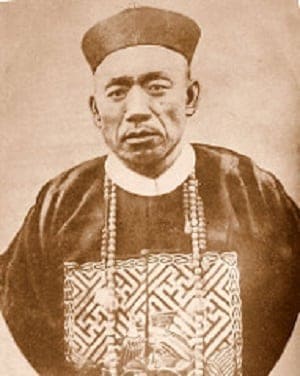
Other than campaigning against Spanish oppression, Rizal would also end up fighting what he perceived to be the Chinese exploitation of his countrymen. He viewed the Chinese primarily as unscrupulous traders and businessmen who liked to take advantage of Filipinos for profit even if it meant kowtowing to the Spanish.
Rizal’s dislike for the Chinese could be seen in his letter to his mother, in which he complained of being embroiled in a lawsuit with a Chinese and promised never to buy any products from him, and from his novel El Filibusterismo, where he portrayed the character of Quiroga (who was reportedly based on a real Chinese businessman) as a shrewd and cunning individual. Continue Reading: 10 Mind-Blowing Controversies Of Philippine History
11. Rizal is regarded by many as the “Father of Philippine Comics” because of some humorous illustrations he made in Germany
The said drawing, entitled “The baptism of two brothers” (see photo above), was inspired by the German cartoon “Max and Moritz.” Rizal made it to entertain the children of his landlord, Pastor Ulmer. The original copy is now preserved in the National Library of the Philippines.
12. Jose Rizal and the Christmas Tree
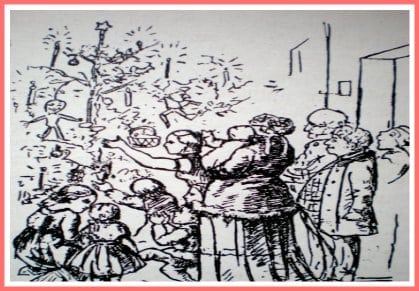
Historical records suggest that it was the Germans who indeed started the Christmas tree tradition in the 16th century. It was later introduced in the U.S. where it was initially met with resistance and seen as a “pagan symbol.”
In the end, the Americans embraced the iconic Christmas tree and even popularized it in the Philippines in the early 20th century. But for some historians like Prof. Ambeth Ocampo, the idea of decorating Christmas tree first came in the country much earlier than that.
In fact, it was Jose Rizal who first mentioned it through his 1886 drawing of a Christmas tree, his interpretation of Hans Christian Andersen’s “Little Fir Tree.” Continue Reading: 7 Surprising Facts You Didn’t Know About Christmas
13. Rizal As a Psychic?
In his journal entry dated January 1, 1883, he shared about a “frightful nightmare” he had two nights before (i.e. December 30). In this dream, Rizal was imitating a dying actor and felt his “breath was failing” and his vision became very dim.
Interestingly, Rizal would be executed 13 years later at the exact same date. Austin Coates, Rizal’s biographer, also underscored that there were many incidents written in both Noli Me Tangere and El Filibusterismo that eventually happened to Rizal in real life.
14. According to Faustino “Tinong” Alfon, Rizal’s former cook in Dapitan, our national hero’s favorite fruits were lanzones and mangoes
His meals back then usually consisted of three kinds of ulam. Rizal’s breakfast, on the other hand, was usually comprised of hot chocolate, rice, and sardinas secas, commonly known now as simply tuyo.
15. Rizal Was Widely Featured in Cigarette Wrappers
Most of these wrappers, made with Art Deco or Art Nouveau designs, were produced in Binondo during the turn of the century. An old cigarette label, Las Delicias, even went to the extreme by featuring Rizal smoking a cigar.
16. Rizal was exceptional and prolific in a wide range of subjects–except music
This is because he already realized early in life that his singing “sounded like the braying of an ass.”
17. Vital statistics: Rizal was about five feet three inches tall and had a waistline of about 25″ to 26.”
He also had a big head: His hats were 6 1/2″ across and the interior measures 8″ from front to back. He didn’t look odd, though, as his broad shoulders and developed neck compensated for it.
18. It was rumored that both Adolf Hitler and Mao Zedong were the illegitimate sons of Jose Rizal
Continue Reading: 8 Mind-Boggling Myths About Jose Rizal
19. Rizal Had a Third, Unfinished Novel
Known among historians as “Makamisa,” this unfinished work was started by Rizal in Hongkong in 1892. Makamisa was not actually the title of Rizal’s work, but only the title of a single chapter of the unfinished Tagalog novel.
20. Rizal once sent a love letter written in invisible ink to Leonor Valenzuela, a tall girl from Pagsanjan
The message could only be deciphered if you put the letter over a lamp or candle. Leonor Valenzuela was one of Rizal’s first sweethearts. Unfortunately, they parted ways when Rizal had to leave for Spain.
21. “A la Senorita C.O. y R.,” one of Rizal’s best poems, was dedicated to Consuelo Ortiga y Rey, a pretty lady whom Rizal fell in love with when he was in Madrid
However, Rizal backed out of the blossoming relationship because he was good friends with Eduardo de Lete who was also in love with Consuelo. He also wanted to remain loyal to Leonor Rivera who would eventually marry Englishman Henry Kipping.
22. Jose Rizal and Leonor Rivera
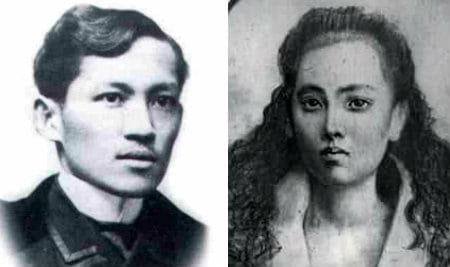
A native of Camiling in Tarlac, Leonor Rivera captured Rizal’s heart when they met during the former’s 13th birthday party. Rizal was then a medical student who boarded at the Casa Tomasina, which at that time was managed by the Riveras.
Bumping into each other was inevitable: Leonor and Rizal’s youngest sister, Soledad, were both boarding students at La Concordia College. Before long, the casual encounters blossomed into a full-fledged romance.
For a decade (1880-1890), the star-crossed lovers wrote each other countless letters, even after Rizal left for Europe to further his medical studies. They continued to keep in touch, but they never saw each other again–no thanks to Noli Me Tangere which already reached the Philippines and had put anyone close to Rizal under scrutiny.
Worse, Leonor’s mother, who was already aware of Rizal’s reputation as a “filibusterer,” bribed the local postal clerk so the letters wouldn’t reach Leonor. Continue Reading: The 6 Most Tragic Love Stories in Philippine History
23. Rizal composed a farewell song for Leonor Rivera just before his departure for Europe
The song, entitled “Leonor,” became very popular that many “were heard singing it in the streets and during social gatherings. The moment they saw Leonor, the children would sing the song.”
Here is the English translation of the song:
And so it has arrived: the fatal instant,
the dismal injunction of my cruel fate;
and so it has come at last: the moment, the date,
when I must separate myself from you.Goodbye, Leonor, goodbye! I take my leave,
leaving behind with you my lover’s heart!
Goodbye, Leonor: from here I now depart.
O melancholy absence! Ah, what pain!
24. The Luna-Boustead-Rizal Love Triangle
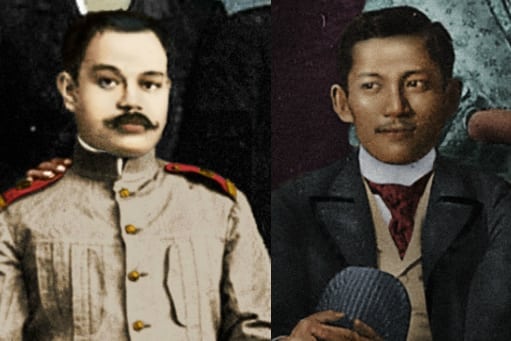
Before he was hacked to death in Cabanatuan, this Filipino general was already teasing death. Luna, being the sensitive guy that he was, impulsively challenged his perceived enemies to a duel–all in the name of honor.
Surprisingly, among those who found themselves on the receiving end of that legendary temper was Jose Rizal, who became Luna’s friend and compatriot when they’re both studying in Europe. How such friendship almost ended up in a duel remains one of the most intriguing “what-ifs” in Philippine history, an event that would have cost us one or two national heroes were it not for a sudden twist of fate. Continue Reading: The Time Antonio Luna and Jose Rizal Nearly Killed Each Other
25. Rizal played a key role in the identification of Oncomelania cuadrasi, a Philippine snail that harbors the parasite that causes schistosomiasis
The said snail was named after a certain Mr. Cuadrasi, a known naturalist in Manila and to whom Rizal sent his specimens for identification.
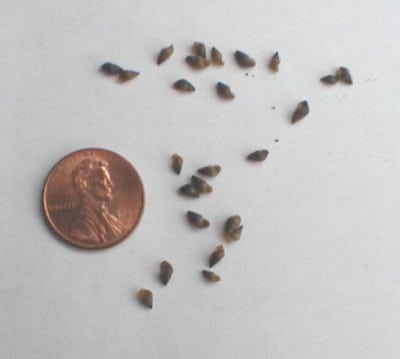
26. While in Dapitan, Rizal wrote an extensive written discourse on kulam
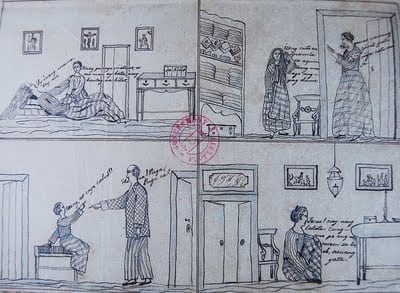
Entitled “La curacion de los hechizados” (The treatment and cure of the bewitched), this lesser-known work of Rizal explores the psychological treatment for kulam and even explained that witches were not always women who are old or ugly.
He also discussed the difference between hiloanon of the Visayas, who gives poison to her victims, and the manggagaway, the ‘traditional’ witch who uses ragdoll and pins.
27. Jose Rizal and Pedro Paterno
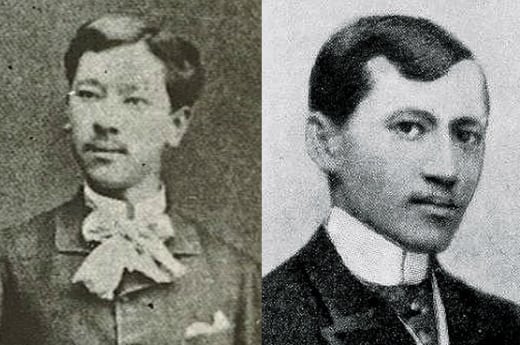
You know your mind is operating on a totally different wavelength when even the country’s national hero cannot describe your level of insanity.
Yet Pedro Paterno did just that, rendering Jose Rizal at a loss for words courtesy of his crazy theory that the pre-Spanish Filipinos practiced a proto-Christian religion way before the Spaniards arrived.
In his book Antigua Civilizacion Tagalog, Paterno modeled the history of pre-Spanish Philippines closely with that of the ancient civilizations of Europe. According to him, the natives practiced a monotheistic religion he termed Tagalismo/Bathalismo throughout Luzon and the Visayas which formed part of the ancient state.
And like something out of a Da Vinci Code-esque plot, Paterno said the baybayin alphabet contained hidden meanings, all of which pointed to the existence of the religion and its adherents in the archipelago. Continue Reading: How Pedro Paterno “Invented” A Religion (And Got Called Crazy By Rizal For It)
28. Jose Rizal’s Paranormal Encounter

Apparently, even the Philippines’ foremost hero was not immune to otherworldly hauntings. While in exile in Dapitan, Rizal wrote to a Jesuit priest about one of his houses being haunted by a poltergeist. In this case, the poltergeist was said to be targeting his significant other Josephine Bracken who also believed that it was the spirit of her dead father.
Rizal wrote that many of their household items had been broken by the poltergeist. When Josephine asked the spirit what it wanted, “All her cups, tea kettles, saucers, etc. fell down at the same time. All the boys and I saw it.” Continue Reading: 6 Famous Filipinos And Their Alleged Paranormal Encounters
29. During Rizal’s execution, a total of 8 Filipinos armed with Remingtons formed the firing squad
There were also 8 Spanish soldiers with Mausers behind them, ready to shoot the Filipino soldiers if they refused to execute Rizal.
30. A descendant of one of the executioners, Adolfo Pastor Quetcuti, revealed that the captain of the guards put only one live bullet in one of the rifles while placing blanks in the others
He explained that this is to ease their guilt as they already knew in the beginning that Rizal was innocent.
31. Not all of Rizal’s skeletal remains were buried under the monument in Luneta
A vertebra or a piece of the backbone where Rizal was allegedly hit by the bullet was claimed by his family and is now displayed at the Rizal Shrine, Fort Santiago.
32. Jose Rizal’s last Words
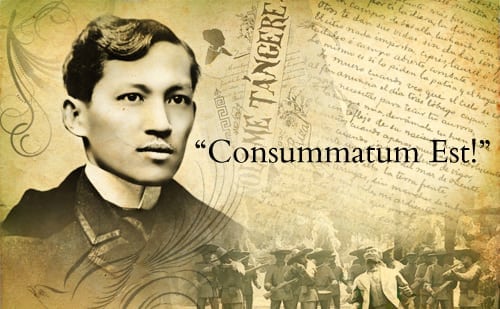
“Consummatum Est!” (It is finished!) were Rizal’s last words during his execution by firing squad in Bagumbayan on December 30, 1896. His words are said to have been the same ones used by Jesus Christ shortly before he died of crucifixion. Continue Reading: 13 Most Famous Last Words Ever Uttered in Philippine History
33. Rizal’s original execution photo features a dog, the mascot of the firing squad
It is said that the dog ran around the corpse whining after a soldier fired one last shot in Rizal’s head to make sure he was dead.
34. Rizal stuffed unknown papers in his pockets and shoes on the eve of his execution
He did this thinking that his corpse would be turned over to his family after the execution. But as we all know, his body was dumped by Spanish officials in an unmarked grave in Paco cemetery. The papers had since deteriorated, the contents of which were never identified.
35. He left specific instructions on how he wanted to be treated after his death
Here are some of his “last wishes”:
36. Rizal’s execution led to the death of a Spanish Prime Minister
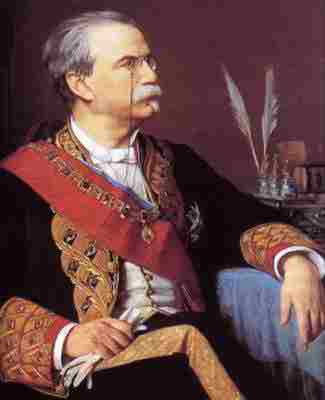
On August 8, 1897, an Italian anarchist named Michele Angine Golli shot at point-blank range Spanish Premier Antonio Canovas del Castillo outside a spa. After being interrogated, Golli said he killed Canovas to avenge his fellow anarchists who had been imprisoned and executed in the castle of Montjuich, Barcelona.
He also dedicated his act as retribution for the death of “Don Jose Rizal” and expressed regret for his failure to kill Camilo de Polavieja, the Spanish Governor-General under whom Rizal was executed. Continue Reading: 8 Famous Filipino Events You Didn’t Know Influenced The World
References
abs-cbnNEWS.com, (2011). Jose Rizal was a sculptor, too. [online] Available at: http://www.abs-cbnnews.com/lifestyle/07/06/11/jose-rizal-sculptor-too [Accessed 19 Jun. 2014].
CUPIN, B. (2014). The hero and the human that is Jose Rizal. [online] GMA News Online. Available at: http://www.gmanetwork.com/news/story/241498/lifestyle/peopleandevents/the-hero-and-the-human-that-is-jose-rizal [Accessed 19 Jun. 2014].
Fernandez, R. (2009). Little known facts on Rizal as an agriculturist. [online] Asianjournalusa.com. Available at: http://asianjournalusa.com/little-known-facts-on-rizal-as-an-agriculturist-p5353-87.htm [Accessed 19 Jun. 2014].
Himig.com.ph, (2014). Rizal’s Verses for Leonor and Maria Clara. [online] Available at: http://www.himig.com.ph/features/47-rizals-verses-for-leonor-and-maria-clara [Accessed 19 Jun. 2014].
Joserizal.ph, (2014). Jose Rizal [Different Characters]. [online] Available at: http://www.joserizal.ph/ch01.html [Accessed 19 Jun. 2014].
Joserizal.ph, (2014). Jose Rizal [Love Life]. [online] Available at: http://www.joserizal.ph/lv01.html [Accessed 19 Jun. 2014].
Myrizal150.com, (2011). The story of the Rizal Monument | MyRizal150. [online] Available at: http://myrizal150.com/2011/06/the-story-of-the-rizal-monument/ [Accessed 19 Jun. 2014].
Ocampo, A. (2012). Looking Back 5: Rizal’s Teeth, Bonifacio’s Bones. 1st ed. Mandaluyong City: Anvil, pp.9-10.
Ocampo, A. (2012). Rizal Without the Overcoat. 2nd ed. Mandaluyong City: Anvil, pp.61, 64, 77, 155, 157.
Ocampo, A. (2014). Things you won’t ever know about Rizal. [online] Newsinfo.inquirer.net. Available at: http://newsinfo.inquirer.net/16114/things-you-won%E2%80%99t-ever-know-about-rizal [Accessed 19 Jun. 2014].
Philstar.com, (2014). Rizal’s execution: Little known facts | Headlines, News, The Philippine Star | philstar.com. [online] Available at: http://www.philstar.com:8080/headlines/643170/rizals-execution-little-known-facts [Accessed 19 Jun. 2014].
PULUMBARIT, V. (2014). 10 little-known facts about Dr. Jose Rizal’s life in Spain. [online] GMA News Online. Available at: http://www.gmanetwork.com/news/story/341828/pinoyabroad/news/10-little-known-facts-about-dr-jose-rizal-s-life-in-spain [Accessed 19 Jun. 2014].
FilipiKnow
FilipiKnow strives to ensure each article published on this website is as accurate and reliable as possible. We invite you, our reader, to take part in our mission to provide free, high-quality information for every Juan. If you think this article needs improvement, or if you have suggestions on how we can better achieve our goals, let us know by sending a message to admin at filipiknow dot net
Copyright Notice
All materials contained on this site are protected by the Republic of the Philippines copyright law and may not be reproduced, distributed, transmitted, displayed, published, or broadcast without the prior written permission of filipiknow.net or in the case of third party materials, the owner of that content. You may not alter or remove any trademark, copyright, or other notice from copies of the content. Be warned that we have already reported and helped terminate several websites and YouTube channels for blatantly stealing our content. If you wish to use filipiknow.net content for commercial purposes, such as for content syndication, etc., please contact us at legal(at)filipiknow(dot)net

